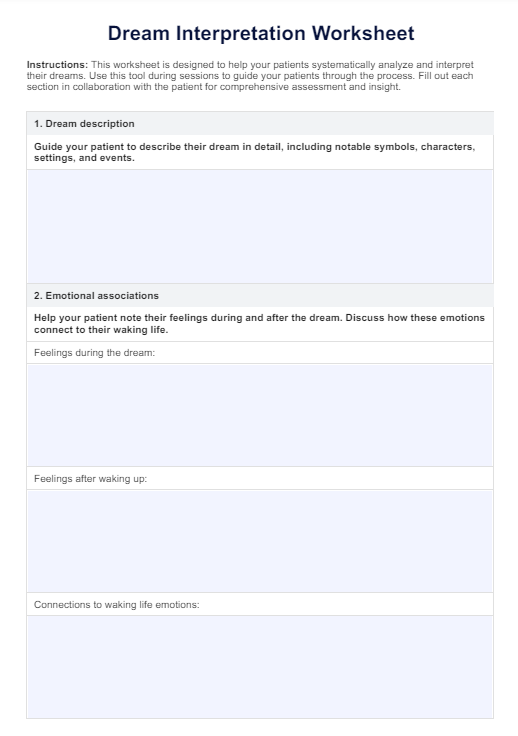Interpreting patients' dreams can provide valuable insights into their subconscious minds, helping to uncover unresolved emotions, conflicts, and desires. This process can facilitate better understanding and resolution of psychological issues, enhancing therapeutic outcomes.

Dream Interpretation Worksheet
Discover the secrets of your dreams with our Dream Interpretation Worksheet. Gain insights into your subconscious mind and improve your waking life. Download now!
Dream Interpretation Worksheet Template
Commonly asked questions
While some theories suggest dreams might offer glimpses into future thoughts or behaviors, no scientific evidence supports this. Most dreams reflect a patient's thoughts, emotions, and experiences, offering insights rather than predictions.
Encourage patients to use the worksheet whenever they have vivid or recurring dreams that leave a strong impression. Regular use can benefit ongoing self-reflection and emotional processing, especially if dream content is recurrent or particularly impactful.
EHR and practice management software
Get started for free
*No credit card required
Free
$0/usd
Unlimited clients
Telehealth
1GB of storage
Client portal text
Automated billing and online payments











